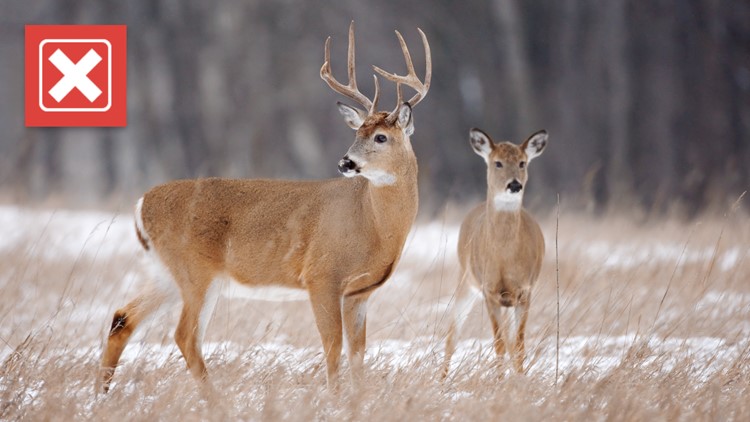Since November, Yellowstone National Park and the state of Kentucky have confirmed their first documented cases of chronic wasting disease in deer carcasses.
Viral social media posts and news headlines warn that CWD, which is sometimes referred to as “zombie deer disease,” could infect humans.
That’s led people online to wonder whether the disease can spread from deer to humans, and what symptoms it might cause, Google search data show.
THE QUESTION
Is there evidence of chronic wasting disease in deer spreading to humans?
THE SOURCES
THE ANSWER
There is no evidence of chronic wasting disease in deer spreading to humans.
WHAT WE FOUND
Chronic wasting disease (CWD) is a fatal and untreatable neurological illness that spreads among members of the deer family, including elk and moose. But, since CWD was first discovered in 1967, there have been no reported cases of infection in people, the Centers for Disease Control and Prevention (CDC) says.
CWD belongs to the “prion disease” family, which also includes the human form of “mad cow disease” called variant Creutzfeldt-Jakob disease (vCJD), according to the CDC.
“There is no direct evidence that CWD has ever been transmitted to humans like mad cow disease,” the government of Alberta, Canada, says online.
The National Park Service echoed this in its November news release about a mule deer carcass found near Yellowstone testing positive for CWD, writing there is “currently no evidence” that the disease “can infect humans or domestic animal species.”
But there is still concern that the disease could pose a risk to humans.
Some research shows CWD can be transmitted to monkeys closely related to humans that eat infected meat or come into contact with brain or bodily fluids from infected animals, the CDC and Canadian officials say.
CWD can have a long incubation period of over a year and infected animals may not show any signs of the disease for years after they become infected, according to the CDC.
“These studies raise concerns that there may also be a risk to people. Since 1997, the World Health Organization has recommended that it is important to keep the agents of all known prion diseases from entering the human food chain,” the CDC says.
“Because of the long time it takes before any symptoms of disease appear, scientists expect the study to take many years before they will determine what the risk, if any, of CWD is to people,” the federal health agency adds.
That’s why the CDC recommends that people avoid eating meat from an animal that has tested positive for CWD.
It also recommends that people take other precautions to decrease the potential risk of exposure to CWD:
- Do not shoot, handle or eat meat from deer and elk that look sick or are acting strangely, or are found dead. Signs of CWD in animals can include drastic weight loss, stumbling, lack of coordination, listlessness, drooling, excessive thirst or urination, drooping ears, and lack of fear of people.
- Wear latex or rubber gloves when dressing the animal or handling the meat, minimize how much you handle the animal’s organs, and avoid using household knives or kitchen utensils for field dressing.
- Check state wildlife and public health guidance to see whether testing of animals is recommended or required.
- Strongly consider having the deer or elk tested for CWD before you eat the meat.













